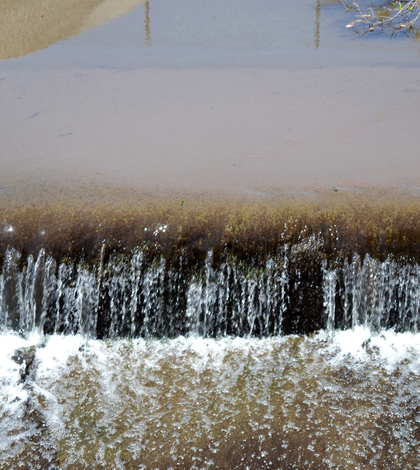A grant of up to $4,000,000 has been authorized by the board of the State Coastal Conservancy to the city of Los Angles for the San Fernando Valley Stormwater Capture Project. The funds will be used for the design, implementation and monitoring of five sites in the San Fernando Valley.
The State Coastal Conservancy is responsible for the protection and restoration of California’s coast and waterways. The investment in the San Fernando Valley Stormwater Capture Project will aid in cleaning water that eventually drains from local streets into the Los Angeles River and then into the Pacific Ocean.
Existing street paving will be removed on five boulevards in the San Fernando Valley and replaced with a surface that is durable, but allows water to filter through it and into the water table underground. Plans include the construction of swaled drainage courses with gently sloped sides designed to concentrate or remove silt and pollution from surface runoff water. These bioswales will collect rainwater and allow it to percolate into the water table. Trees will also be planted to provide shade and to cool the area for residents and visitors thereby making the streets more inviting for people to walk.
“These projects further demonstrate the benefits of constructing urban streets in ways that are more aligned with nature. We want to have more livable communities in the Northeast San Fernando Valley that are more resilient to climate change, and creating infrastructure that can capture and infiltrate rainwater is the way of the future,” said Assemblymember Raul Bocanegra (D-Pacoima). “I want to thank the Coastal Conservancy for investing in these improvements that will play a key role in our local water supply.”
By increasing water permeability along the targeted streets, the project will reduce stormwater runoff, alleviate local flooding and improve water quality downstream. The aquifer underneath the San Fernando Valley is capable of holding millions of gallons of water. The goal of the new infrastructure is to capture the stormwater and allow it to filter back into the aquifer, a process that cleans the water naturally. The sites included in the project include: Glenoaks and Filmore; Van Nuys Blvd. from Laurel Canyon to San Fernando; Branford Street from Laurel Canyon to the Pacoima Wash; Agnes Avenue from Vanowen to Kittridge; and, Lankershim Blvd. from Chandler to Victory.
“Currently, stormwater runs off from surface streets into the LA River and, ultimately, the Pacific. This creates a twofold problem: first, runoff washes surface pollutants and toxins directly into the water system, and second, stormwater doesn’t penetrate the local aquifer, exacerbating drought problems,” said Kara Kemmler, Coastal Conservancy project manager. “This project will capture 494 acre-feet of stormwater per year to recharge the local aquifer, the equivalent of a year’s worth of water for approximately 1,200 single-family households. The soil also acts as a natural filter, which will help to remove pathogens that wash off the streets during storms.”
The San Fernando Valley Stormwater Capture Project is part of the State Coastal Conservancy’s LA Urban Greening program, a $12 million campaign to increase the amount of public green space in underserved communities within the LA coastal watershed. Two of the five San Fernando Valley Stormwater Capture Project sites are also part of Mayor Garcetti’s Great Streets Initiative, which aims to activate public spaces and revitalize neighborhoods by enhancing the design and function of designated city streets. The project also supports the “One Water LA” program developed by the City to provide an integrated approach for water supply, wastewater treatment, and stormwater management.
“These are truly multi-benefit projects,” continued Kemmler. “In the San Fernando Valley, not only will our project recharge stormwater runoff, it will also create healthy, verdant spaces along urban city streets. The removal of asphalt and installation of native plants and trees will lower surface and air temperatures, giving communities respite from the ‘Heat Island Effect.’”
 California Water News Daily Your Source For Water News in California
California Water News Daily Your Source For Water News in California


